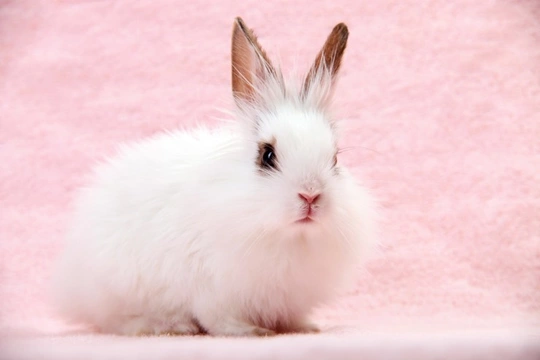
Wool block in rabbits
Wool block is the term given to a potentially very dangerous build-up of wool or rabbit fur in the digestive tract, which is most likely to occur in very longhaired rabbits that shed heavily, such as the Angora and the Chinchilla, although it can theoretically occur in any breed or type of rabbit.
Regular grooming, particularly of longhaired breeds and particularly when they are shedding their coat is vital in order to prevent wool block from developing, and all rabbit owners should make themselves aware of the risk factors and early warning symptoms of a problem in the making.
In this article, we will look at wool block in rabbits in more detail, including how it occurs, what can be done about it, and steps that you can take to prevent it happening. Read on to learn more about wool block in rabbits.
What is wool block?
Wool block in rabbits happens in a similar way to hair balls in cats. All rabbits naturally groom themselves by means of licking their coats, and when they do this, loose hair from the coat is ingested into the stomach. When this happens in small amounts it does not pose a problem, and the loose hair is passed out of digestive system in the rabbit’s faeces in the normal way.
However, if your rabbit ingests a lot of fur when they groom themselves, this can tangle and knot up within the digestive tract to cause matts, which can grow very large and dense over time. These matts can entirely block up the digestive system, bringing it to a halt as no food can pass by the blockage. Rabbits need to graze and eat constantly in order to thrive, as their digestive systems need to be constantly mobile, and it is very hard encourage a rabbit to start eating again once the digestive system has stalled, and so this can pose a problem in and of itself.
Added to this, the hair ball may be large enough that it not only blocks the digestive tract, but makes the rabbit feel full and so, less interested in eating.
Whilst cats can and do cough up and regurgitate their hairballs and so, resolve them on their own, rabbits cannot do this, and so the only way a hair blockage can be cleared from the digestive system naturally is for it to pass out in the faeces.
Because rabbits are not able to regurgitate hairballs, once they reach a certain size the hairballs will effectively stop up the digestive system entirely, which is an emergency situation that can soon prove fatal if left untreated.
Can wool block be prevented?
There are a range of pre-emptive steps that you can take to minimise the chances of your rabbit developing wool block, which is particularly important if your rabbit has long or thick fur, and sheds heavily. First of all, grooming your rabbit regularly and taking care to remove all shed fur before it has the chance to matt up is important, and you should monitor your pet’s shedding cycles and pay special attention to removing loose fur and grooming them very thoroughly when they are going through a shed.
Added to this, it is important that your rabbit eats plenty of fibre, which should consist of grass or hay as the bulk of the diet, which is what rabbits eat naturally in the wild. Feeding enough fibre is vital for preventing wool block, and the condition is most likely to occur in rabbits whose main diet consists of a commercial rabbit food mix with not enough hay and grass for fibre and roughage.
Feeding your rabbit an enzymatic supplement or treat such as plain unsweetened pineapple pieces in small amounts every few days can also help to break down hair in the digestive system and stop a potential problem in the making; however, too much pineapple can lead to diarrhoea, so introduce it gradually and don’t overfeed.
Also, immobile rabbits will have slower digestive systems that are more apt to blocking up, so ensure that your rabbit has plenty of things to entertain themselves with, and can spend plenty of time exercising and moving around.
How would I know if my rabbit had wool block?
A sudden loss of appetite or refusal to eat is one of the main indications of wool block, particularly if this occurs in a longhaired rabbit that is moulting, has unkempt fur, or has just gone through a moult.
You should also check the consistency and texture of your rabbit’s stools, as a rabbit with a blockage may have misshapen stools, less frequent passing of stools, or visible threads of hair in the stools as well. In the case of very large hairballs in the stomach, you may even be able to feel them when you palpate the stomach.
What can be done to deal with wool block?
Wool block is an emergency situation that can prove fatal for rabbits, and so if you know or suspect that your pet has a blockage, you must contact your vet as soon as possible.
Your vet will need to examine your rabbit to confirm the presence of a blockage, and then may decide to approach treatment in a variety of different ways. They may give the rabbit an enema, or a supplement to try to get things moving naturally, but if this proves ineffective or the blockage is very large, surgical removal of the mass may be the best option.



